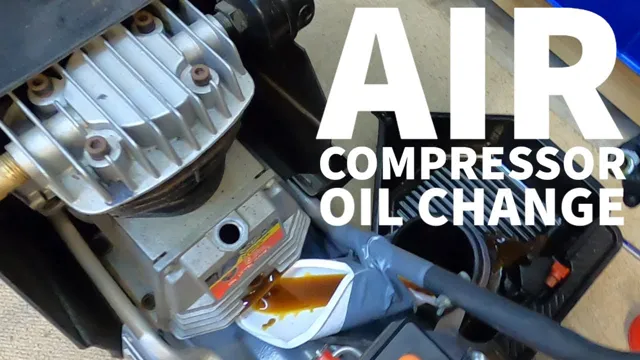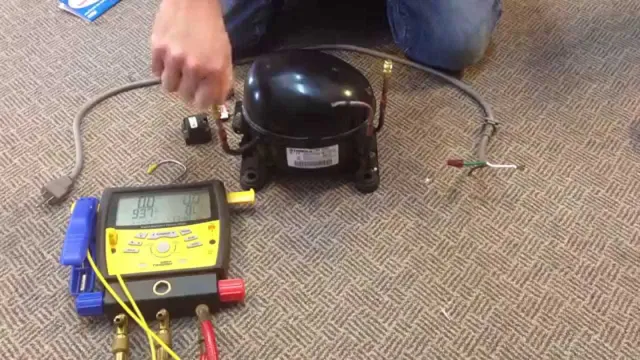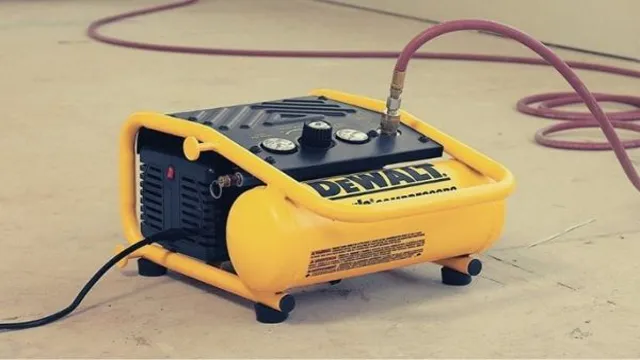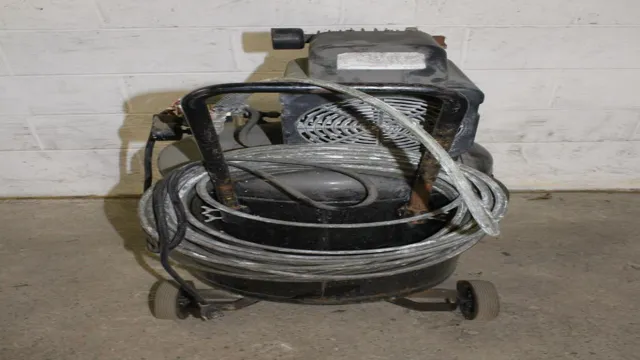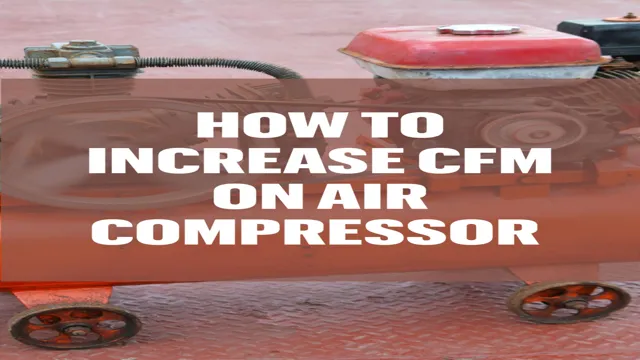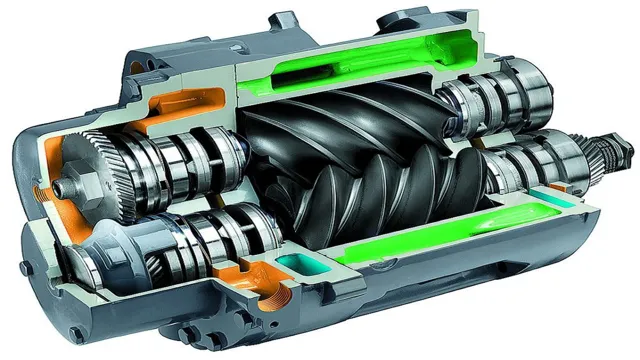How to Mount Air Compressor on Wall: Step-by-Step Guide for Space-Saving Solutions
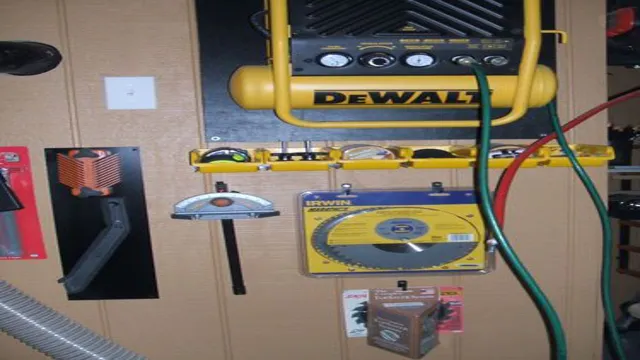
Mounting your air compressor on the wall can be a game-changer for those who use compressors on a daily basis. If you’re tired of tripping over a bulky machine or dealing with the noise it creates, wall-mounting can be the solution you’ve been looking for. Not only does this method save on floor space, but it also allows the compressor to be positioned closer to the work area for maximum efficiency and convenience.
Picture a toolbox that’s always in reach, never in the way – that’s what wall-mounting your air compressor is like. Just like any tool you regularly use, keeping it organized and within reach can make a world of difference. And when it comes to air compressors, a simple wall mount can make your workspace tidier and more functional than ever before.
Plus, having your compressor off the ground means it’s subject to less wear and tear, as well as less exposure to dirt and debris. This can help extend the lifespan of your machine, saving you money in the long run. And with easy access to the compressor, maintenance tasks like changing the oil or cleaning the air filter become a breeze.
So why wait? With the right tools and a little know-how, mounting your air compressor on the wall can be a quick and easy project that will make a big difference in your workspace. Say goodbye to cluttered floors and tangled cords, and hello to a cleaner, more efficient workspace.
Gathering the Necessary Tools and Supplies
When it comes to mounting an air compressor on your wall, you’ll need the right tools and supplies to get the job done. Firstly, you’ll need a drill with appropriate bits, measuring tape, screws, and anchors suitable for the weight of your air compressor. You may also want to use a level to ensure that your compressor is mounted straight on the wall, and a stud finder to locate the strongest mounting points.
Additionally, you’ll need safety gear like gloves and goggles to protect yourself while drilling and mounting. Once you have all of your tools and supplies, it’s time to get started! Use the measuring tape and level to mark the appropriate drilling points on the wall. Then, drill pilot holes at each point to secure the anchors and screws.
Finally, mount the compressor on the wall using the screws and make sure it’s securely attached. With the right tools and a bit of know-how, you can easily and safely mount your air compressor on the wall.
List of Required Tools
If you’re planning to take on a DIY project, it’s important to make sure you have all the necessary tools and supplies before you start. Some essential tools include a hammer, screwdrivers, pliers, a saw, and a level. You may also need a drill, a tape measure, and a utility knife.
It’s essential to choose high-quality tools that can withstand the wear and tear of the job. In addition to tools, you’ll also need supplies such as screws, nails, sandpaper, and paint. It’s helpful to make a list of everything you’ll need and take inventory of what you already have.
Making sure you have all the necessary tools and supplies will not only make the job easier but also help you to avoid frustration and delays.
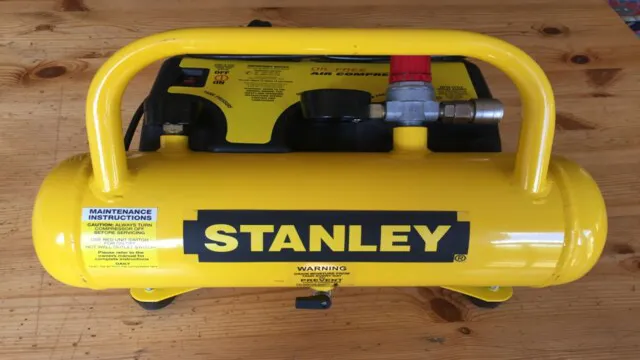
List of Required Supplies
If you’re planning on taking up a new hobby or DIY project, it’s essential to gather all the necessary tools and supplies. Depending on what you plan to create, the list of supplies required can vary greatly. For example, if you’re interested in painting, you’ll need paints, brushes, canvases, and protective gear like drop cloths and gloves.
On the other hand, if you’re interested in sewing, you’ll need a sewing machine, fabric, thread, scissors, and other sewing essentials. When compiling your list of required supplies, it’s vital to keep in mind what you already have and the quality of the items you’ll need. Investing in high-quality tools and supplies may cost a bit more upfront, but it can save you time, frustration, and money down the road.
Don’t forget to do your research and read reviews before purchasing to ensure that you’re getting the best value for your investment. By gathering the necessary tools and supplies ahead of time, you’ll set yourself up for success and enjoy a more seamless and enjoyable crafting experience.
Preparing Your Air Compressor for Wall Mounting
If you’re looking to save space in your workshop or garage, mounting your air compressor on the wall is a great option. But before you get started, you need to make sure your compressor is ready for wall mounting. First, check that the unit is compatible and rated for wall mounting.
Next, ensure that you have all the necessary hardware and tools, including mounting brackets and screws. Before positioning the compressor on the wall, ensure that the area is clear of any obstacles and that the surface is strong enough to support the weight of the compressor. Finally, once you have mounted the compressor, make sure that all fittings and hoses are secure and that the compressor is level to ensure efficient and safe operation.
By following these steps and being prepared, you can easily mount your air compressor on the wall and save precious floor space in your workspace.
Removing the Rubber Feet
Preparing an air compressor for wall mounting involves removing the rubber feet first. These feet play a crucial role in providing a stable base for the compressor, but when you want to mount it onto a wall, they can get in the way. To remove them, you need to use a wrench to loosen the screws that hold them in place.
Once you’ve removed all the feet, clean the bottom of the compressor and make sure it’s free of any debris. This will ensure a secure mounting when you install it on the wall. When removing the rubber feet, it’s essential to take your time and be careful not to damage the compressor.
Remember that the feet are there for a reason, so you may want to keep them in case you ever need to use the compressor on a different surface. Overall, preparing your air compressor for wall mounting requires careful attention to detail and a precise approach.
Removing the Handles
When preparing your air compressor for wall mounting, one important step is removing the handles. This may seem like a small task, but it can make a big difference in the space you save and the overall appearance of your compressor. Start by identifying the handles on your compressor and loosening any screws or bolts that hold them in place.
Carefully slide them off the compressor and set them aside in a safe place. By removing the handles, you can create a much flatter surface to mount your compressor on, which will make it easier to fit into tight spaces. It also reduces the risk of the handles getting in the way or accidentally snagging on something.
With this one simple step, you can ensure a seamless installation and avoid any potential damage to your compressor.
Mounting Your Air Compressor to the Wall
If you’re looking to save some floor space in your workshop or garage, mounting your air compressor on the wall can be a great solution. Not only does it free up space, but it also keeps the compressor out of harm’s way and within easy reach when you need it. To mount your air compressor, start by choosing the right location on the wall.
Make sure it’s in a place where the compressor won’t be knocked around or bumped into. Once you’ve found the perfect spot, use heavy-duty screws and wall anchors to mount a sturdy shelf or bracket. Then, attach the compressor to the bracket using bolts or other hardware.
Be sure to secure it tightly and consider adding additional supports to distribute the weight evenly. With a little patience and some basic handyman skills, you can have your air compressor mounted on the wall in no time. So why wait? Give it a try and enjoy more space and convenience in your workshop today!
Locating a Suitable Location
Mounting your air compressor to a wall can save valuable floor space in your workshop or garage. Before beginning, it is important to locate a suitable location near a power source and with enough clearance for the compressor to operate without obstruction. Once you have identified a suitable location, it is time to mount the compressor to the wall.
Make sure to use heavy-duty mounting hardware and secure the compressor to a load-bearing wall to ensure safety. You should also consider using vibration pads to reduce noise and prevent damage to the compressor. Mounting your compressor to the wall not only saves space but improves accessibility for maintenance and reduces the risk of damage from accidental contact.
With proper installation, you can enjoy the benefits of a well-mounted air compressor for years to come.
Determine the Height for the Wall Mount Bracket
One important step when mounting your air compressor to the wall is determining the height of the wall mount bracket. This will depend on various factors, such as the weight and size of your compressor, the length of the hoses and power cord, and the available space in your workshop or garage. To ensure easy access and safe operation, it’s best to mount the bracket at a comfortable height that allows you to connect and disconnect the hoses without straining your back or arms.
As a general rule, a height of 4 to 6 feet from the ground is ideal for most situations. However, you may need to adjust the height based on your specific needs and preferences. Just keep in mind that the bracket should be securely anchored to the wall studs or other sturdy surfaces to prevent accidents or damage.
With the right height for your wall mount bracket, you can enjoy a more organized, efficient, and ergonomic air compressor setup that maximizes your productivity and comfort.
Attach the Wall Mount Bracket
When it comes to keeping your air compressor off the ground and out of the way, mounting it to a wall is a great option. To do this, the first step is to attach the wall mount bracket. This bracket will securely hold your compressor in place, so it’s important to make sure it’s installed correctly.
Start by locating the studs in the wall where you want to mount the compressor. Once you have located the studs, attach the bracket to them using heavy-duty screws. It’s important to make sure the bracket is level to ensure the compressor sits evenly on it.
Once the bracket is securely attached to the wall, you can then place your air compressor onto it and secure it using the mounting bolts. By mounting your air compressor to the wall, you will not only free up valuable floor space but also make it easier to access and use.
Install the Compressor
Mounting an air compressor to the wall may seem like a daunting task at first, but it’s actually quite simple. First, you’ll want to ensure that your compressor is rated for wall mounting. Once you’ve confirmed that, locate a sturdy and secure spot on the wall where the compressor can be mounted, preferably using studs.
Mark the location where you’ll be mounting the compressor and then drill holes into the studs using a power drill. Next, affix mounting brackets to the holes you’ve drilled using screws, making sure they are level. Then, attach the compressor to the brackets using bolts or screws, ensuring that it is securely fastened.
Finally, connect the compressor to a power source and to a pressure regulator if necessary. With your air compressor mounted to the wall, you’ll save valuable floor space and have easy access to compressed air whenever you need it.
Testing Your Wall-Mounted Air Compressor
If you’re looking to save some floor space in your garage or workshop, mounting your air compressor on the wall is a great idea. Not only does it free up valuable space, it also provides easy access to your compressor and maximizes its efficiency. Once you’ve mounted your compressor on the wall, it’s important to perform some tests to ensure that it’s working properly and safely.
One thing you should check for is any leaks in the hose connections, as they can cause your compressor to lose pressure and decrease its performance. You can also check the air pressure using a gauge and make sure it’s within the recommended range for your tools. Finally, listen for any unusual sounds or vibrations that could indicate an issue and address it promptly.
By following these steps, you can rest assured that your wall-mounted air compressor is working as it should.
Plug in Your Compressor and Check for Leaks
Testing Your Wall-Mounted Air Compressor Before you can start using your wall-mounted air compressor, it’s important to make sure that it’s in good working order and leak-free. To do this, start by plugging in your compressor and flipping the switch. Listen for any unusual sounds that might indicate a problem, and keep an eye on the pressure gauge to make sure that your compressor is building up pressure as it should.
If everything sounds and looks good, it’s time to check for any air leaks. To do this, you will need some soapy water and a spray bottle. Begin by spraying the soapy water onto all of the connections and fittings around your compressor, and watch carefully for any bubbles that might form.
These bubbles indicate a leak, and you will need to tighten or replace the affected connection or fitting to stop the leak. Once you have tested all of the connections and fittings and made any necessary repairs, you can rest assured that your compressor is ready to use. With proper maintenance and regular testing, your wall-mounted air compressor will provide you with reliable service for years to come.
Conclusion
In conclusion, mounting an air compressor on the wall is not rocket science, but it does require a bit of planning, measuring, and DYI skills. With some basic tools and materials, you can safely and securely elevate your compressor, saving valuable floor space and eliminating tripping hazards. Whether you’re a seasoned DIYer or a first-timer, this guide has hopefully provided you with some useful tips and tricks to get the job done right.
So next time you find yourself gasping for air in a cluttered garage or workshop, remember that the solution might be as simple as going up…
on the wall!”
FAQs
What are the benefits of mounting an air compressor on a wall?
Mounting an air compressor on a wall can save valuable floor space and make it easier to access for maintenance and repairs.
What tools do I need to mount an air compressor on a wall?
You may need a drill, mounting screws, plumbing fittings, and a stud finder.
Can all air compressors be mounted on a wall?
Not all air compressors are designed to be mounted on a wall, so it is important to check the manufacturer’s specifications before attempting to mount one.
How do I find the right location to mount my air compressor on a wall?
The best location for mounting an air compressor on a wall is a sturdy, level surface near the main power source and air lines.
Do I need to secure the air compressor to the wall studs?
It is highly recommended to mount the air compressor to the wall studs for added stability and safety.
What is the maximum weight that can be safely mounted on a wall?
The weight limit for mounting on a wall will vary depending on the type of wall and its construction, so it is important to check the weight limit before mounting any heavy equipment.
Can I use mounting brackets to secure my air compressor on a wall?
Yes, mounting brackets can be used to secure an air compressor on a wall, but it is important to ensure that the brackets are properly secured to the wall studs to prevent accidents or damage.

